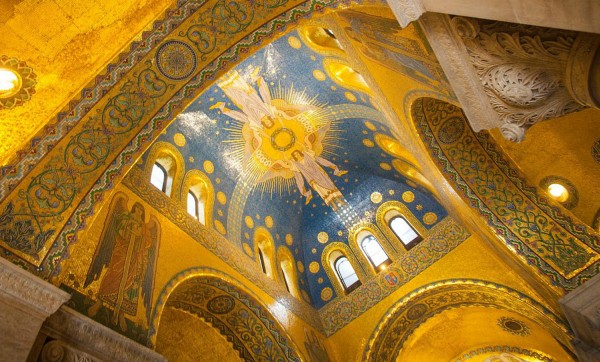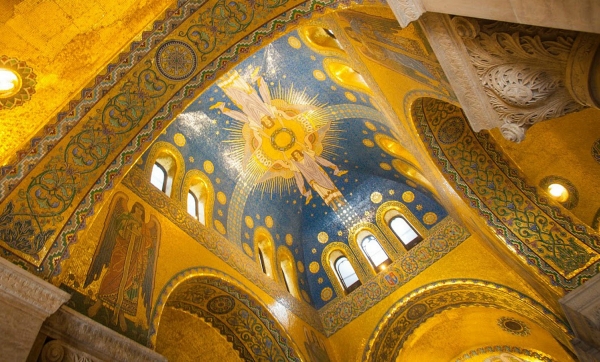Kossuth Mausoleum Salvaged
The renewed monument was opened
Architect: Kálmán Gerster, 1909
Text: György Szegő
Photos: László Sebestyén, Zoltán Kapusi – NÖRI

The burial was indeed the most theatrical funeral ceremony of all times in the history of Hungary: as the politician acted as the engine of the Reform Age, was a charismatic man of state during the war of independence in 1848-49, his final resting place was found in Kerepesi cemetery owned by the capital city of the country. His mausoleum was designed by Kálmán Gerster. Inaugurated in 1909 and reconstructed on several occasions since then, the Kossuth Mausoleum became endangered again after its most recent reconstruction in 1993-99. Now as the very first step of a long project, the largest funeral building of Hungary was inaugurated. Being a genuine Gesamtkunstwerk, it houses monumental sculptures by Alajos Stróbl as well as works by Gyula Jungfer, József Kauser, Dezső Kölber and Miksa Róth. It is a breathtaking spectacle in itself following famous prototypes of art history such as the old Christian burial monument of Galla Placidia built in Ravenna in 440. Angels clad in ceremonial attires hold a wreath of laurels above the coffin on the ceiling. Featuring a palette of warm golden and cool dark blue hues, the mosaic entirely envelopes the lateral walls, the columns and the alcoves where the tombs of the relatives of Kossuth are. Allegorical figures of justice, law, truth and power evoke simultaneously the characteristics of ancient Byzantine art and the neutral beauty of the Parisian and Prague female figures of Alfons Mucha, a contemporary of Miksa Róth himself. The exterior archietcture follows the prototypes of ancient Greek mausoleums, the ceremonious stairs lead to a statue of Hungaria: made by Alajos Stróbl, this female figure represents the mourning Hungary.





